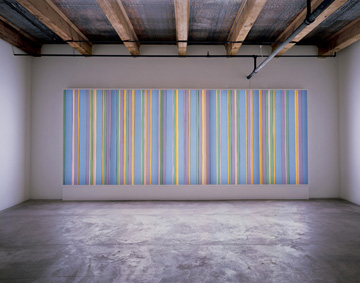
Spencer Finch, "White (Niagara Falls obscured by mist, April 17th, 2006 5:30pm)"
Today we launch the next Flash Points topic, Art & the Environment. We first addressed this issue in Season Four’s episode, Ecology, which delved into the work of artists who relate their work to nature in distinct ways. Over the next two months, we’ll expand upon these concepts and further explore how art is reacting to the environment, how the environment reacts with art, and everything in between.
From sustainability and alternative energy solutions, to green-collared jobs and maintaining a low carbon footprint, environmental concerns and how our world is addressing them is an ever-present issue. As artist Mark Dion stated in the episode, “We have a test ahead of us in terms of our relationship to the natural world. If we pass the test we get to keep the planet, but I don’t really see us doing a very good job of that right now.”
Take American national parks, for example. We’re reminded not only of how valuable these landscapes are as a national resource, but also how tenuously they hang in the balance. The parks were established in opposition to the commercialization of our country’s natural wonders—Niagara Falls being an often-used example. This place is still symbolic of both the beauty of our natural landscapes, and what happens when we try capitalizing on them.
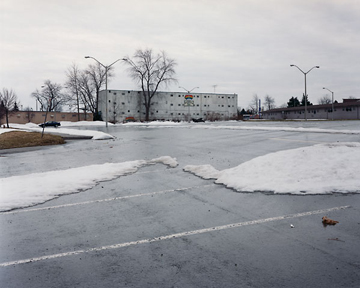
Alec Soth, "Rainbow Inn," from the series "NIAGARA," 2005
Art as both a reaction to our environment, and as a method for building public awareness, aren’t new concepts. Carleton Watkins enticed Easterners in the 19th century to see the spectacular landscapes of Yosemite with his photographs. Artists of the Land Art movement of the 1960s and 1970s rejected the idea of the museum or gallery as a place to perceive art, and instead traveled to the remote outreaches of the U.S. and used the land as their medium. These ideas continue with artists today, who both showcase the natural world and react to the many environmental concerns that constantly threaten its survival. This includes artists such as Maya Lin, whose work immerses the viewer in the environment, inviting us to examine our own relationship with it.
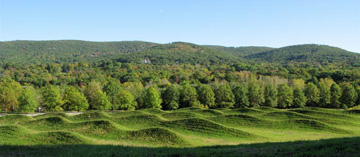
Maya Lin, "Storm King Wavefield," 2007-2008
Another artist working in this vein is Eirik Johnson, who brings attention to the damage caused by national resource-based industry, and what this does not only to the landscape, but also to the people whose lives have been affected by it.
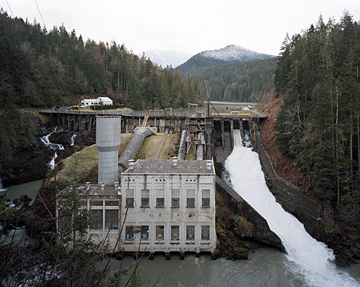
Eirik Johnson, "Elwha River Dam, Washington," from the series "Sawdust Mountain," 2006 – 2008
We’ll explore institutions that make it their mission to incorporate works of art with their surroundings, such as Storm King Art Center in upstate New York and the Chinati Foundation’s beautifully minimal desert, as well as the efforts made to protect both the art and the land.
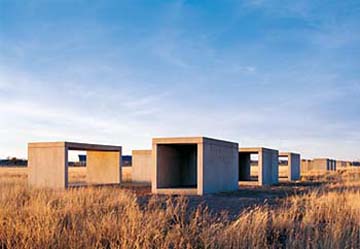
Donald Judd, 5 untitled works in concrete, 1980-1984
Here are a few more of the questions we’ll be addressing over the coming weeks. We’d love to get your thoughts, and any ideas you have for additional sub-topics, in the comments below:
- How does art factor into the conversation on environmental preservation?
- How do artists react to today’s environmental issues?
- Can art be used as a way to contextualize and understand environmental concerns?
- When art is placed within the environment, what kinds of steps are taken to ensure its conservation, if any?
- Can art and nature co-exist?




Pingback: Art and the Environment « The Paper Project
Pingback: Flash Points: Art + the Environment Wrap-Up | Art21 Blog